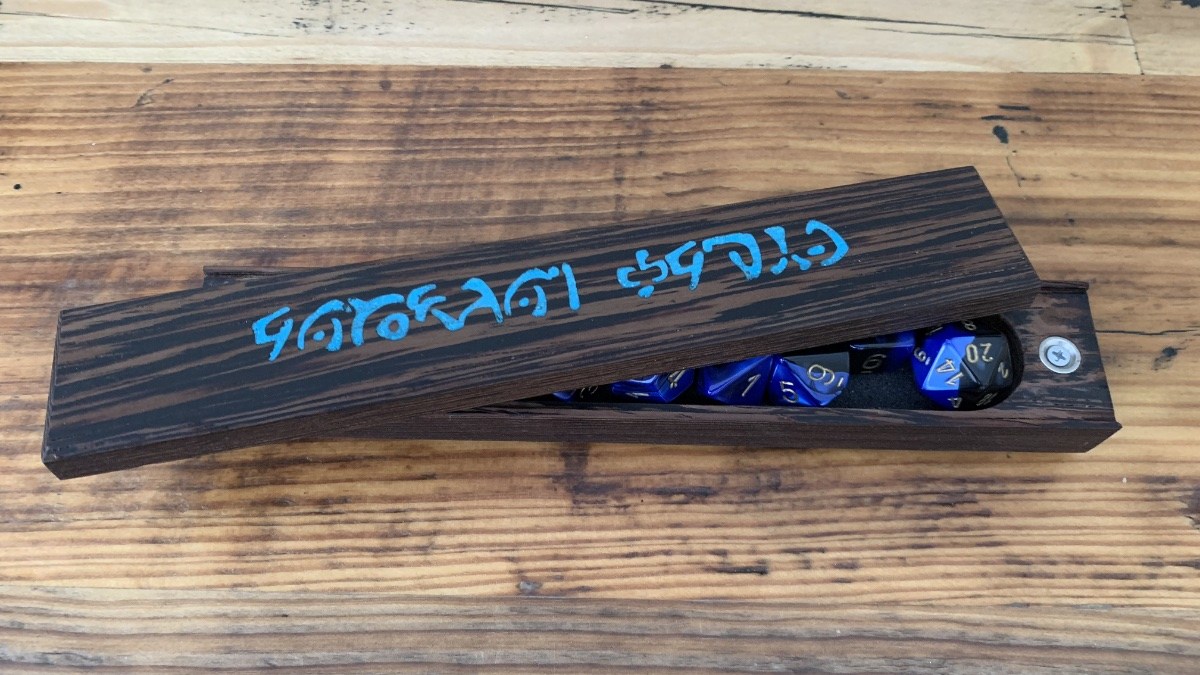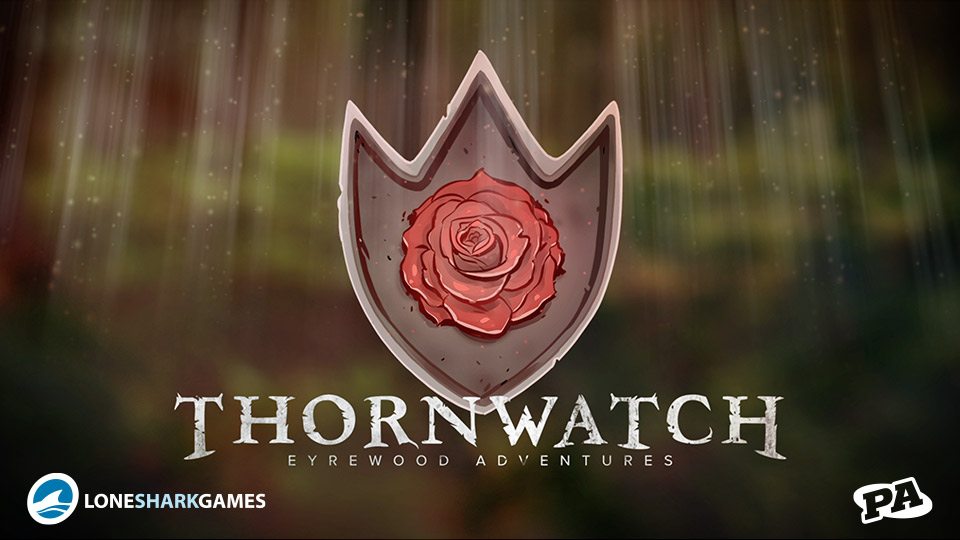In all of the excitement coming out of Star Wars Celebration this past weekend, let’s not forget that Rogue One: A Star Wars Story is now out on digital and Blu-ray so you can watch to your heart’s content. Because (even though this might be a controversial opinion), it’s a better movie than The Force Awakens. (Click here for our review of the Blu-ray release and its special features.)
We had a chance to chat with Neil Corbould, who was SFX Supervisor on Rogue One and has a lot of experience in the industry, making movie magic come to life. Like, a LOT of experience. He began his career in the special effects department of 1978’s Superman, and over the years, as a special effect supervisor, has been instrumental in the look and feel of films such as The Fifth Element, Saving Private Ryan, Gladiator, Black Hawk Down, Superman Returns, Zero Dark Thirty, World War Z, Gravity, and The Martian.
Corbould has won two Academy Awards in Special Visual Effects for Gladiator and Gravity and was also nominated for Rogue One: A Star Wars Story, Superman Returns, and Snow White and the Huntsman.
And currently? He’s at work on Alien: Covenant, Ready Player One, and Mission: Impossible 6. Yeah, he’s kind of a big deal.
GeekDad: You’ve been in the business for a long time, and you actually started on the original Superman. Obviously, the industry has changed immensely over that time. But what can you do today that you literally couldn’t have imagined back then?
Neil Corbould: I deal with the practical side of effects. All of the in-camera stuff…explosions and rigs and stuff like that. That technology has changed so much. Back then, on a movie like Superman, we would attach Christopher Reeve to two little wires that we had to paint out and a very uncomfortable harness that he was strapped into. But these days, we can make actors a lot more comfortable, and the wires can be a lot bigger because Visual Effects can just paint them out. Just in general, we don’t have to hide so much now.
GeekDad: So is it just a matter of it being easier because you don’t have to hide as much? Or are there actually things you can do today that you just couldn’t have done before?
Corbould: Yeah, there’s definitely things we can do now that were just very hard to do back then. But then, because it makes it easier, the directors want more. Which is great, because I always like a challenge. When you’ve got a very visual director, that’s the best thing you can have because it just fires up the imagination and you want to please that director and bring some new stuff to the table.
GeekDad: Rogue One wasn’t the first major sci-fi film you worked on, but I’m curious if you learned anything in the process of making The Martian or Gravity that you then carried over to Rogue One?
Corbould: Yeah, you always take a little bit over to the next movie, which is great. So my background with war movies, like Saving Private Ryan and Black Hawk Down, was perfect for Rogue One. In my first meeting with Gareth [Edwards], he said, “I want it to feel like those two movies, plus Apocalypse Now. And having worked on those movies gave me a great starting point. We could bring that technology into the Star Wars universe but not take it too far. Because we still have an obligation to the fans to make it as real as possible but not take it too far past A New Hope. So we had that on our shoulders – to keep everybody happy.
GeekDad: I wanted to ask about that. The temptation, I’m sure, when you start working on a project like this, is to take it as far as you can. It’s a big sci-fi spectacle, and you want to make it something special. But with Rogue One, you had to straddle that line. It had to be a fresh movie but still had to be respectful of the aesthetics of A New Hope, which are 40 years old. How much of a challenge was that?
Corbould: Yeah, it was a challenge. I watched A New Hope six times before starting the movie. I got all my crew to watch it, too. It’s not just me that comes up with ideas; it’s my whole team. We brainstorm stuff together. So it was like, “OK everybody, this is what we’re matching. We have this new technology we can use, but don’t go crazy with it. Bring in ideas that complement A New Hope.” So with simple stuff like blaster hits, in A New Hope, they were very smokey. They looked alright, but we could take some of the smoke out with the new materials we’ve got now. We changed the colors on some of the sparks. Just very slightly, we put some yellow and blue into it – not too much, just very subtly done. We had to keep A New Hope as our base.
What I love about Rogue One is that even though it is before A New Hope, we had a certain amount of license. We couldn’t have lightsabers or anything like that, but we could make it more of a war movie. Give it a bit of a documentary-style feel.
GeekDad: Were there effects that you really wanted to use but just couldn’t because it would’ve clashed with the design you were trying to emulate?
Corbould: No. My thinking in my head was to try and keep it as close to the original as possible. It’s a bit easier for us now, just given the new technology that we’ve got. We developed some new stuff for the battles. We had these air cannons – nitrogen cannons – with very high pressure, like 1000 psi, that we could get very close to actors. So that was new technology that we brought into the battle feeling of the movie. So instead of using a pyrotechnic charge where an actor had to be 20 feet away, we could use these compressed nitrogen cannons and get them inches away. And the actors really react to it much better. And they loved it. They really brought our effects alive and embraced what we did. Once we showed them how safe it was. One of our guys would stand on top it and blow himself up and then walk out of it and just dust himself off.
GeekDad: That’s got to have an effect on the performance. Even though you see someone blow themselves up and walk away, it’s still probably pretty scary when it’s happening all around you.
Corbould: Well, that’s it. The Battle of Scarif for us was quite a big deal. There were a number of cameras around, actors running everywhere, wires with stunt people on them, and huge explosions going off. It’s something that had to be planned and worked out and rehearsed. But the outcome was fantastic. Everyone played a great part, and we achieved a great sequence.
GeekDad: I’m curious, from your point of view, what was the most difficult effect in Rogue One, from a technical perspective? Was it re-creating Peter Cushing or was it something else?
Corbould: Well, Peter Cushing was very much the job of John Knoll and his team. In the scope of the whole film, I guess it was the most challenging part – and Leia as well. I suppose we knew it would be controversial, but at the end of the day, I thought it looked fantastic. My daughter went to see it, and she’s 18 years old, and she didn’t think it was CG. And when I told her afterward, she was gobsmacked.
GeekDad: I know you weren’t directly involved in that, but being in the industry, I’m sure you have an opinion. We call that a performance, but it wasn’t Peter Cushing. It was Guy Henry and the special effects teams who made that come to life. But I wonder what your feelings are when it comes to actors such as Henry or Andy Serki and whether they should be eligible for acting awards.
Corbould: Yeah, that’s a very interesting point. They are very talented actors in their own right, and they do bring the performance to the characters. I think they certainly should be acknowledged in that respect. I think it’s maybe just a matter of time before somebody does get the nod.
GeekDad: I’m sure you’re not easily impressed with special effects and the actual process of making films, but can you recall the last time you saw a film and didn’t know how an effect was done?
Corbould: Ooh, that’s a good one. I mean, I like to go and watch movies. I really do. I like to get absorbed into a movie. And if it does that, then I know the effects are good, and they’ve done a good job. So it does happen. I watch a movie, and I know full well there are effects in it, but I just can’t see them. And I was lucky enough to work on one of those movies with Gravity. I had Oscar-winning visual effects people come up and ask, “How did you do that?” They just had no idea. So I appreciate great work, and it’s always getting better. And I think the reason for that is the combination of practical and visual effects. When you marry them together in a perfect blend, then it’s brilliant.




